This post may contain affiliate links. Please read my privacy policy.
Asam Laksa is a delightful sour and spicy noodle soup, originating from Penang, Malaysia. This iconic Nyonya dish features a tangy fish broth infused with aromatic spices. Typically served with rice noodles, it's topped with an array of fresh vegetables including lettuce, cucumber, onion, mint, and pineapple, adding layers of texture and flavor to the dish.
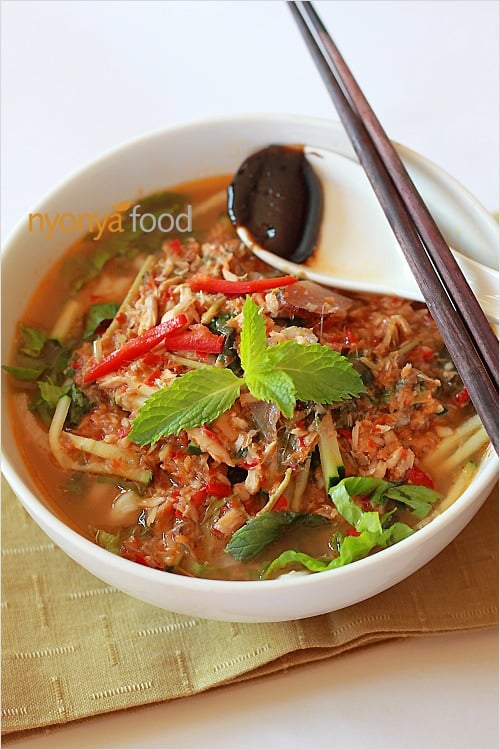
What Is Asam Laksa
Asam laksa, also spelled as Assam laksa, is a piquant, pungent, sour, and fiery-hot noodle dish featuring fresh vegetables bathed in a flavorful fish broth. Originating from Penang, it’s considered a Nyonya creation.
Referred to simply as Laksa in Penang, this dish is ubiquitous across the region, available in kopitiams (coffee shops), roadside stalls, mobile pushcarts, and hawker centers.
With its perfect balance of tartness and spiciness, Asam laksa stands out as a uniquely Malaysian dish. Its distinctive flavor profile sets it apart from other dishes in the Southeast Asian culinary landscape.
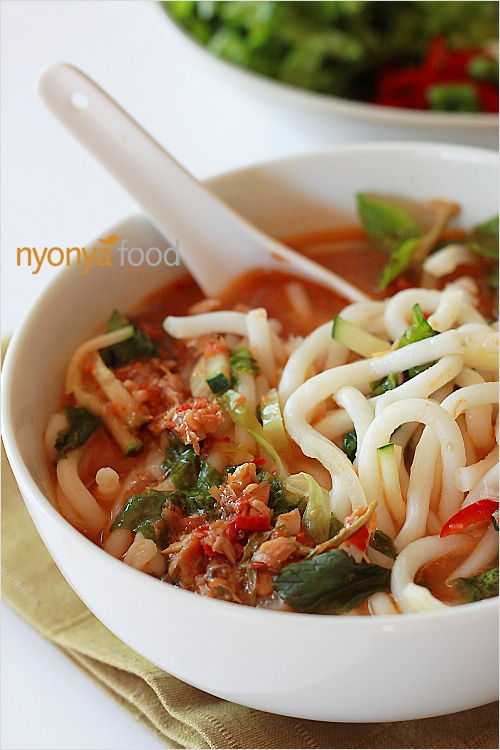
#7 Most Delicious Food In The World

Asam laksa, arguably the quintessential street hawker food in Penang, has undeniably placed the city on the culinary map. The mere mention of “Penang Assam Laksa” is enough to evoke cravings among Malaysians and foreigners alike who have had the pleasure of tasting it.
This dish stands as one of the most successful, explosively delicious, addictive, and appetizing Nyonya concoctions. Its fame transcends borders, earning it a coveted spot as No. 7 on CNN World’s 50 Best Foods list.
My Family’s Asam Laksa Recipe
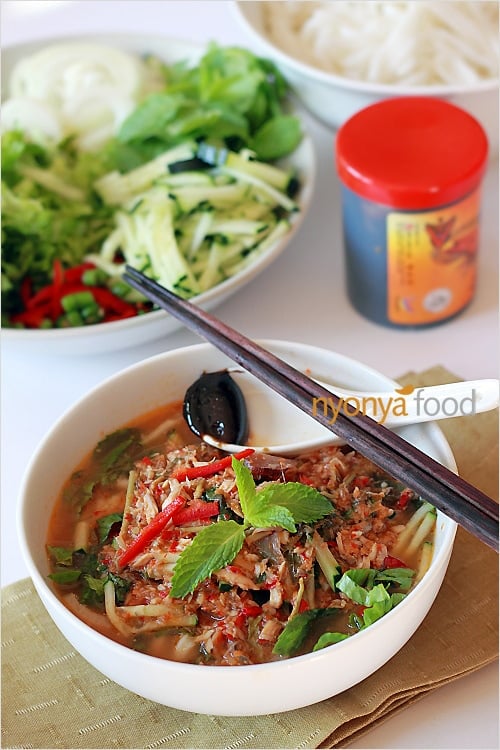
This noodle dish holds a special place of celebration in my family, largely due to my late grandmother. Grandma was a devout Buddhist, deeply immersed in her faith. Raised by her Thai-Chinese mother, my grandma spoke Thai fluently, and Thai influences permeated her religious practices and daily life.
Grandma’s devotion was particularly evident in her visits to Wat Chayamangkalaram, the Thai reclining Buddha temple in Penang. Every month, my father, mother, aunt, and I would accompany her for prayers at the temple. Inside Wat Chayamangkalaram, there’s a shrine dedicated to a deity known as “Laksa Ang Kong” or Laksa God. Legend has it that Laksa God had an affinity for laksa, hence why the only offering made to Him is this beloved noodle dish.
Every month, on the morning of prayer, my grandmother, mother, and aunt would rise early to prepare a large pot of the soup base. I eagerly joined them in the kitchen, slicing vegetables, deboning fish, and crafting the spice paste. This cherished ritual not only bestowed upon me invaluable culinary techniques but also forged unforgettable bonds.
This is my family’s recipe for asam laksa, a dish that holds a special place in my heart. Its exquisite flavor evokes memories of precious moments spent with loved ones, relishing both our shared faith and the delights of homemade cuisine.
These nostalgic recollections will forever linger in my mind, a testament to the enduring power of tradition and togetherness.
What To Serve With Asam Laksa
For a complete Penang street food experience, I recommend the following recipes.
Additionally, feel free to explore my other Malaysian recipes, such as Chicken Satay, Beef Rendang, Nasi Lemak, Char Kuey Teow, Penang Hokkien Mee next. Happy cooking!
I hope you enjoy this post as much as I do. If you try my recipe, please leave a comment and consider giving it a 5-star rating. For more easy and delicious recipes, explore my Recipe Index, and stay updated by subscribing to my newsletter and following me on Facebook, Pinterest, and Instagram for new updates.
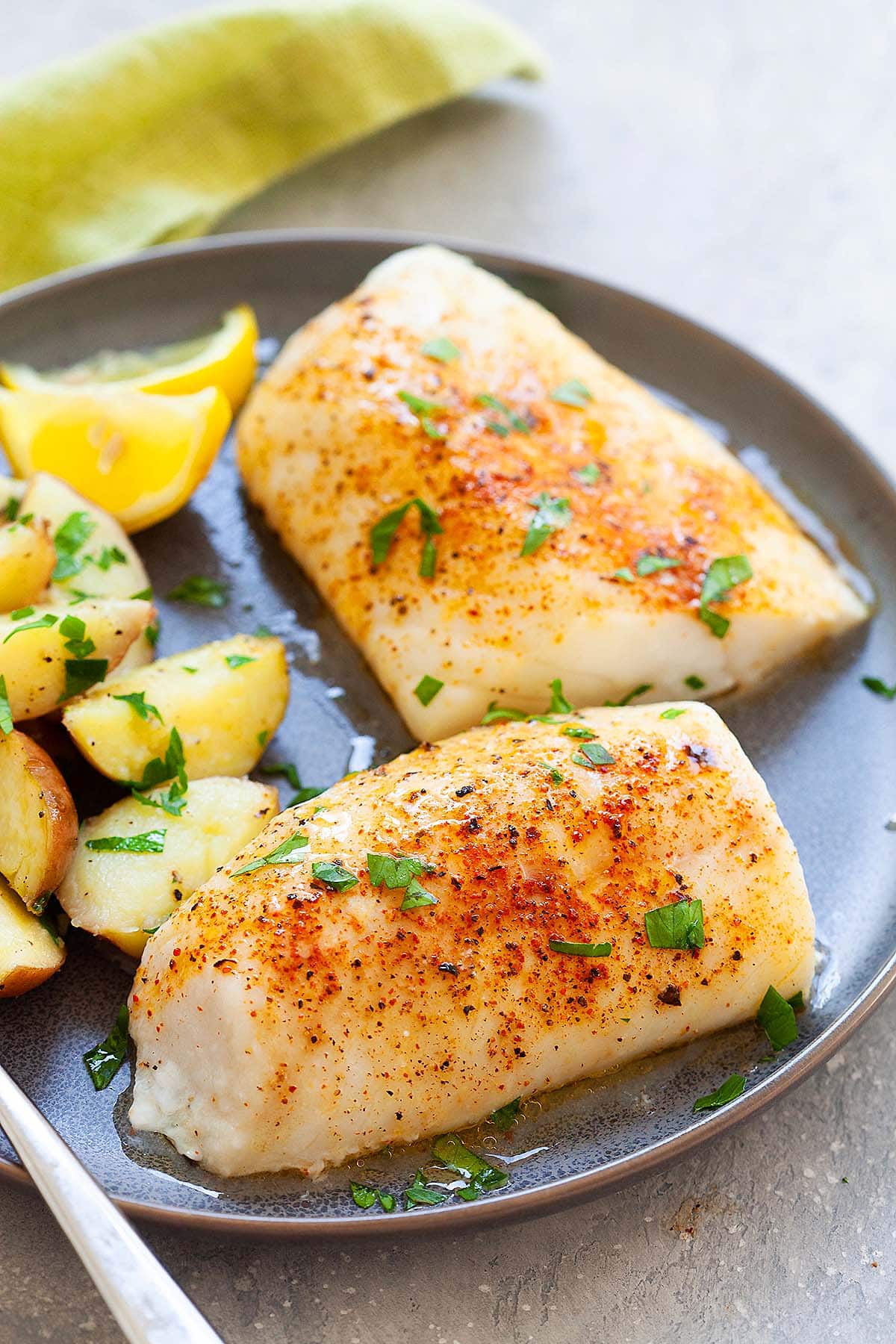
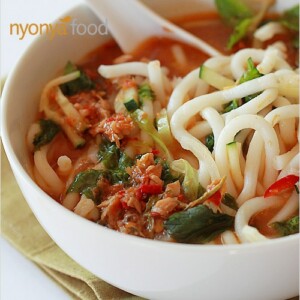
Asam Laksa
Ingredients
- 1.5 lb (750g) mackerel fish
- 8 cups water
- 5 pieces asam keping, peeled tamarind
- laksa noodles
Spice Paste:
- 15 dried red chilies
- 5 fresh red chilies
- 8 small shallots
- 1 inch (2.5cm) galangal
- 2 tablespoons belacan, shrimp paste
- 1 stalk lemongrass
Tamarind Juice:
- tamarind, about golf ball size
- 1/2 cup water, repeat 3-4 times
Seasonings:
- 1 teaspoon salt , or to taste
- 2 tablespoons sugar , or to taste
Garnishing:
- 1 cucumber, julienned
- 1 bunch mint leaves, use only the leaves
- 1 bunch polygonum leaves, Vietnamese mint leaves/daun kesom/daun laksa
- 1 bungan kantan, torch ginger flower, cut into small pieces
- 1 red onion, sliced thinly
- 1 lettuce, thinly cut
- 1 red chili or 3-4 bird’s eye chilies, cut into small slices
- 1 small pineapple, cut into short strips
Condiment:
- Heh Ko , Shrimp Paste
Instructions
- Clean the fish by removing the scales and guts. In a pot, bring 8 cups of water to a boil. Add the fish and boil for about 10 minutes. Transfer the cooked fish to a bowl and let it cool. Strain the fish stock, then add the peeled tamarind and polygonum leaves. Continue to boil over low heat.
- Keep your hands wet by dipping them into a bowl of water regularly. Remove the flesh from the fish and discard the bones. Break the fish meat into small pieces and return it to the stock. Cover with a lid and reduce the heat.
- Using a mini food processor, grind the spice paste until fine. Heat a wok and sauté the spice paste in cooking oil for about 6-8 minutes, or until it becomes aromatic and spicy. Transfer the spice paste into the boiling stock.
- Extract the tamarind juice and add it to the stock. Strain the juice, keeping the seeds. Repeat this process 3-4 times, using 1/2 cup of water each time, to ensure you extract all the essence from the tamarind. Continuously taste the Assam Laksa stock to ensure it's sour to your liking. Adjust the seasoning by adding salt and sugar to taste.
- In a serving bowl, add the laksa noodles and garnish with all the vegetables on top. Pour the fish broth over the noodles and serve immediately with a spoonful of Heh Ko (prawn paste).
Notes
- If you can’t find fresh laksa noodles, you can use dried noodles. I recommend the Mount Elephant brand “Guilin Rice Vermicelli” (象山牌桂林濑粉) found at Asian or Vietnamese stores. (In Vietnamese, it’s called Bun Bo Hue Guilin.) It has a very smooth texture and closely resembles laksa noodles, albeit slightly thinner.
- Another good alternative is the Lai Fen Rice Stick (中山濑粉) from Guangdong, China, which is often available fresh in many Asian stores.
- Unfortunately, Bunga Kantan, torch ginger flower, is not available in the US.
- I recommend Shrimp and Boy brand Shrimp Paste.
Nutrition
Nutrition information is automatically calculated, so should only be used as an approximation.
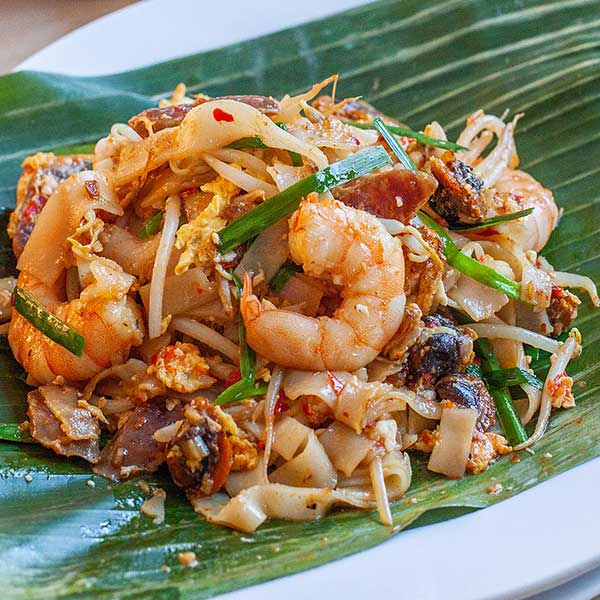
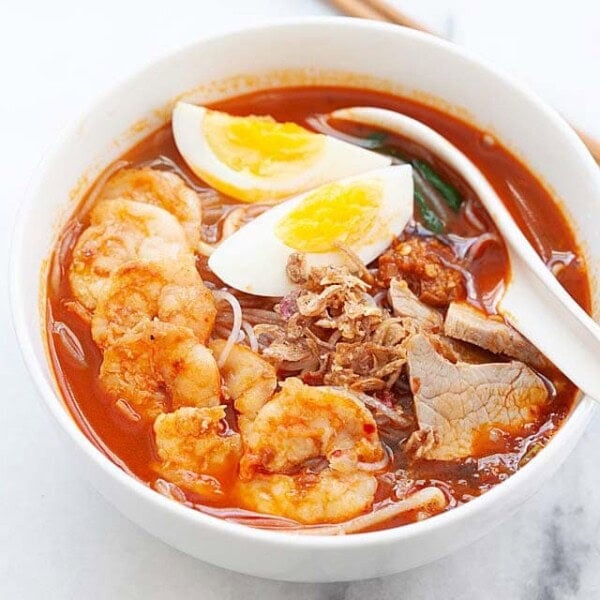
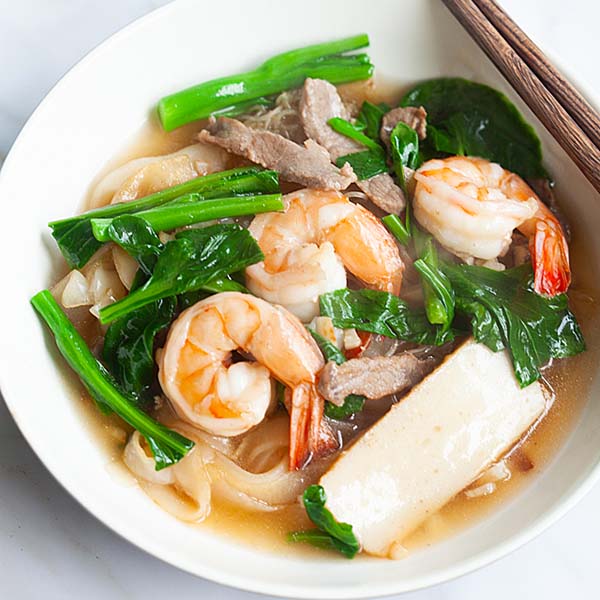
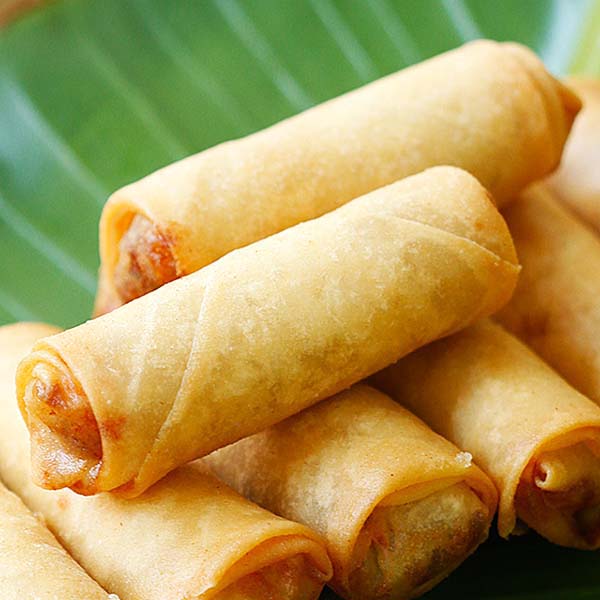






Very good!
The write up for this recipe was deeply moving. What an incredible glimpse into the traditions and customs of an ethnic group not normally represented in the west. This is another prime example of how diverse cultures are preserved in the recipes and techniques that make up they’re respective cuisines’.
Is this halal ?
Yes.